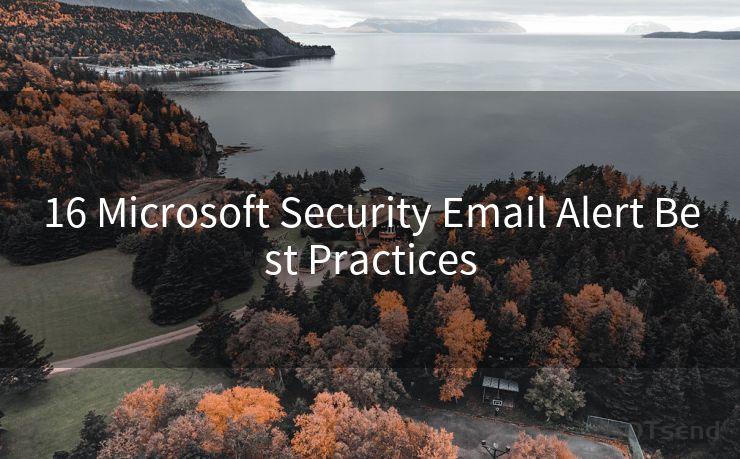16 Microsoft Security Email Alert Best Practices




When it comes to email security, Microsoft has always been at the forefront, providing robust solutions to protect users from various threats. In this blog post, we'll explore 16 best practices for Microsoft security email alerts that can help you stay vigilant and secure.
1. Enable Advanced Threat Protection (ATP)
Microsoft's Advanced Threat Protection (ATP) offers a layer of protection against malicious links and attachments. By enabling ATP, you can detect and block potentially harmful content before it reaches your inbox.
2. Utilize Multi-Factor Authentication
Enhance the security of your Microsoft account by enabling multi-factor authentication. This adds an extra layer of verification, making it harder for unauthorized access.
3. Regularly Update Your Password
Updating your password periodically is a basic yet effective security measure. Make sure to use a strong, unique password each time.
4. Be Cautious of Unknown Senders
Never open emails or attachments from unknown senders. Even if an email appears to be from a trusted source, always verify the sender's identity before engaging with the content.
5. Use the Junk Email Filter
Microsoft Outlook has a built-in junk email filter that helps block unsolicited emails. Keep this feature enabled to reduce spam and potential phishing attempts.
6. Report Suspicious Emails
If you receive a suspicious email, report it immediately to Microsoft. This helps improve their spam filters and protects the community.
7. Avoid Clicking Suspicious Links
Even if an email appears legitimate, avoid clicking links unless you are absolutely sure of their source. Hover over links to check the URL before clicking.

8. Scan Attachments for Malware
Before opening any attachments, use antivirus software to scan them for potential malware. This precautionary step can prevent malicious software from infecting your system.
9. Utilize Safe Links
Microsoft's Safe Links feature checks URLs in emails and documents against a list of known malicious links. Ensure this feature is enabled for added security.
10. Implement Email Encryption
Encrypting sensitive emails ensures that only the intended recipient can read the message content, protecting your data from unauthorized access.
11. Regularly Review Email Settings
Periodically review your email settings to ensure all security features are up to date and properly configured.
12. Train Employees on Email Security
Provide regular training to employees on email security best practices. Knowledgeable employees are your first line of defense against email-based attacks.
13. Use Strong Passwords for Email Accounts
Ensure that all email accounts have strong, unique passwords that are regularly updated.
14. Implement Two-Step Verification
Two-step verification adds another layer of security to your email account, making it harder for hackers to gain access.
15. Monitor Suspicious Activity
Regularly monitor your email account for any suspicious activity, such as unexpected login attempts or changes to account settings.
16. Backup Important Emails
Regularly backup important emails to an external source. In case of any security incident, you'll have a copy of your critical data.
🔔🔔🔔
【AOTsend Email API】:AOTsend is a Managed Email Service for sending transactional emails. Support Email Types: reminders, authentication, confirmations, notifications, verification codes, invoices, password resets, account activations, billing statements, two-factor authentication (2FA), and one-time passwords (OTP) emails, etc. $0.28 per 1000 Emails. 99% Delivery, 98% Inbox Rate.
You might be interested in:
Why did we start the AOTsend project, Brand Story?
What is a Managed Email API, How it Works?
Best 25+ Email Marketing Platforms (Authority,Keywords&Traffic Comparison)
Best 24+ Email Marketing Service (Price, Pros&Cons Comparison)
Email APIs vs SMTP: How they Works, Any Difference?
By following these 16 Microsoft security email alert best practices, you can significantly reduce the risk of falling victim to email-based attacks. Remember, security is everyone's responsibility, so stay vigilant and protect your digital assets.




Scan the QR code to access on your mobile device.
Copyright notice: This article is published by AotSend. Reproduction requires attribution.
Article Link:https://www.mailwot.com/p7203.html



